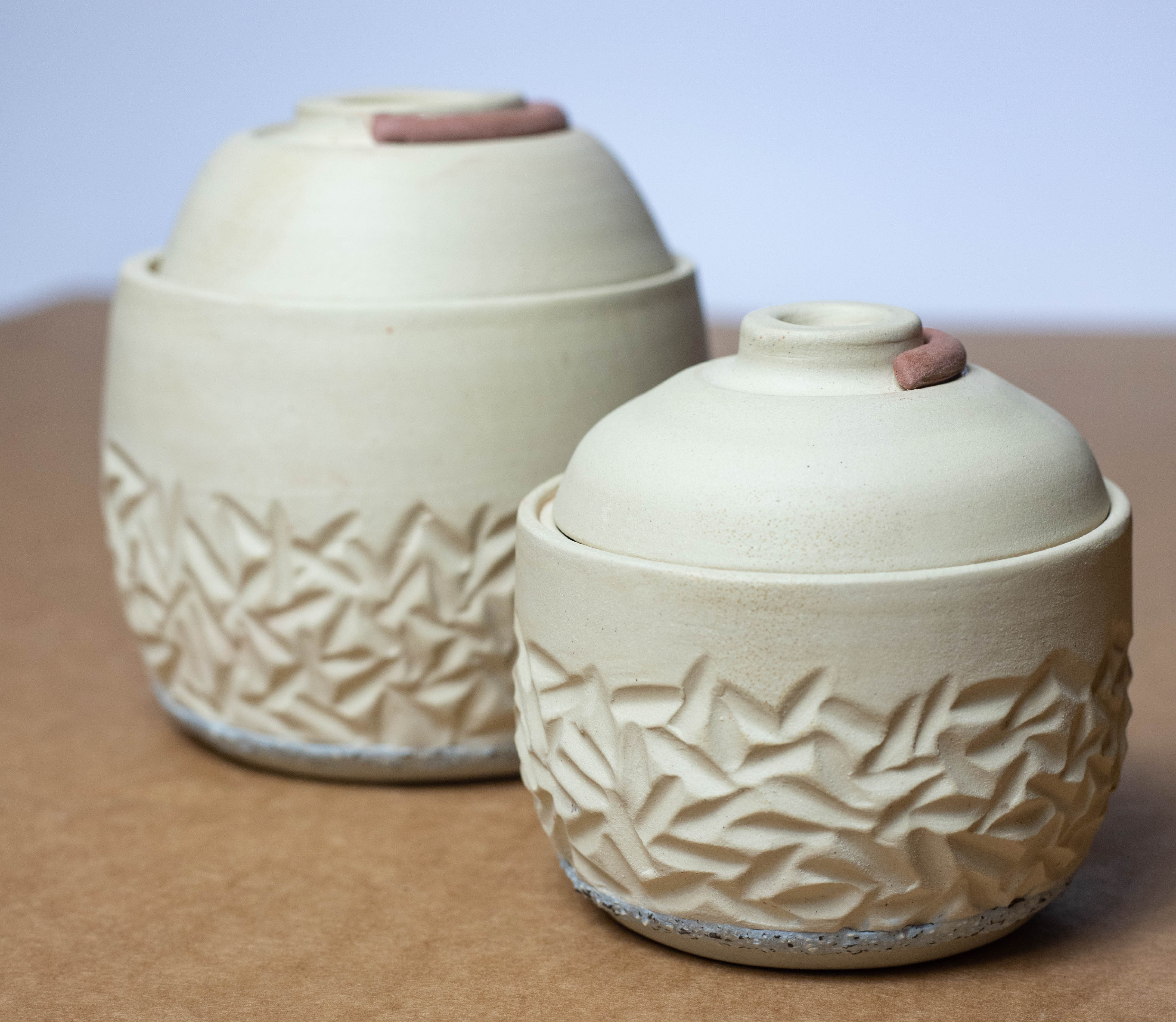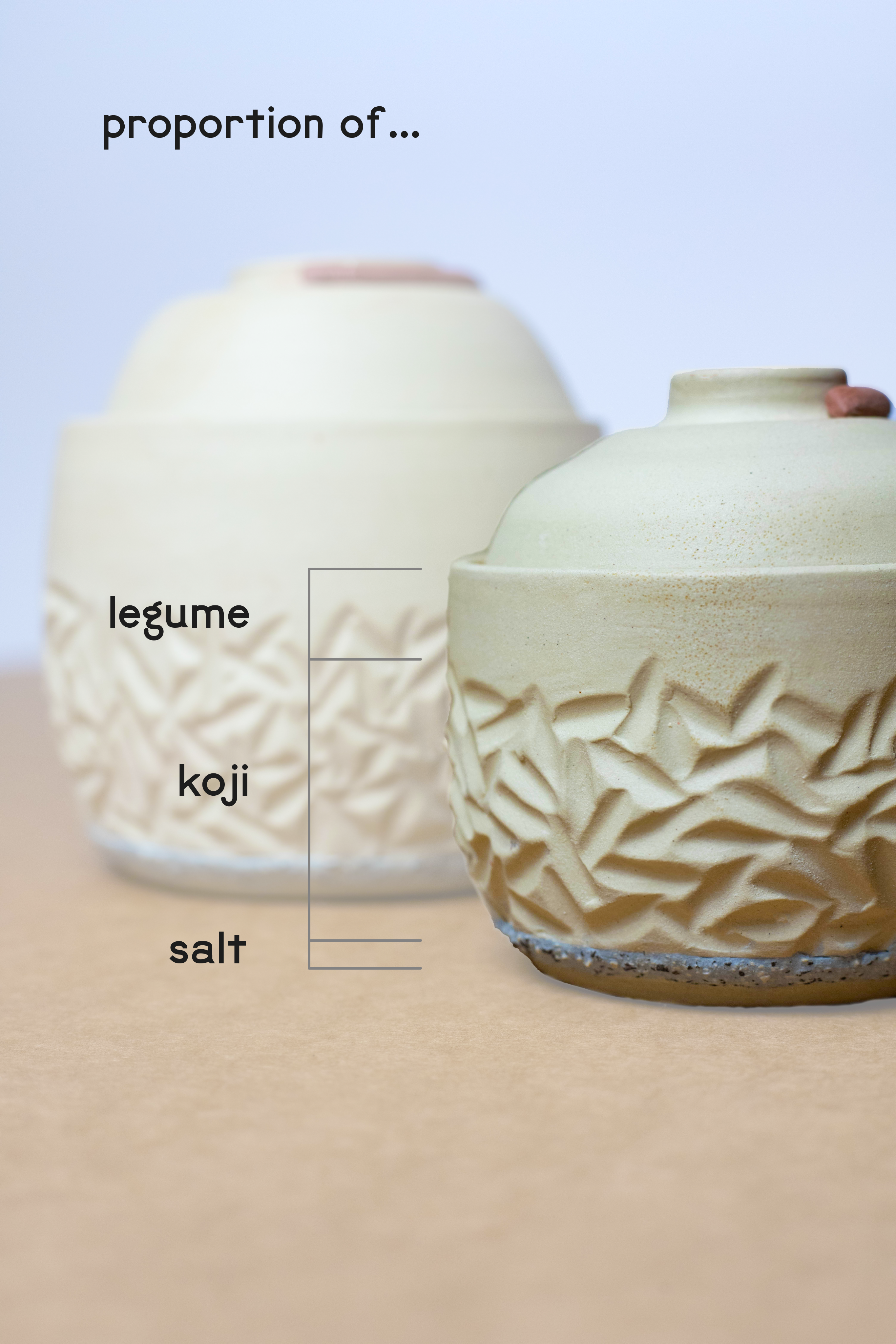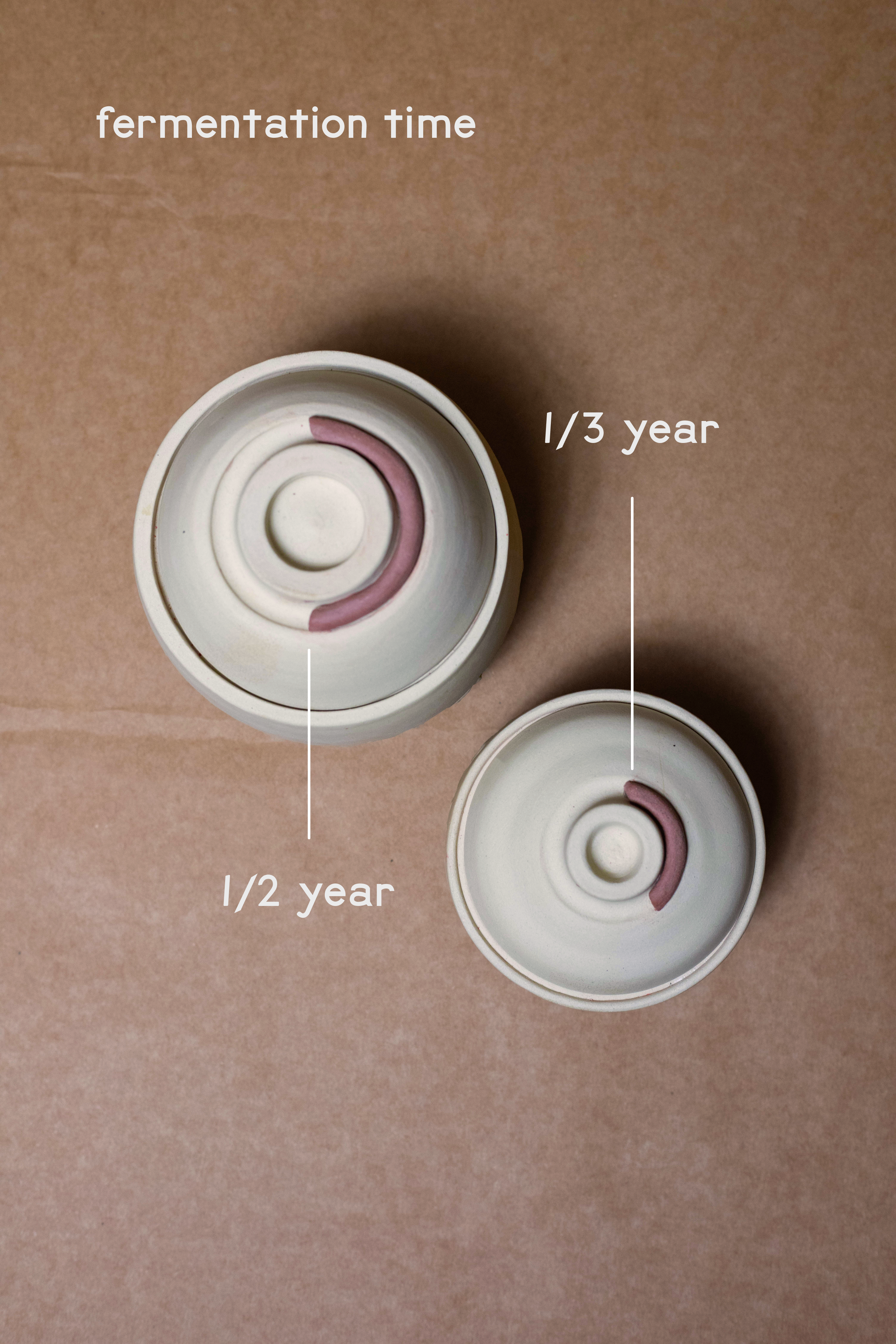Functional Forms:
Data-Encoded Miso Jars

development
Focusing on three key variables — fermentation time, koji proportion, and salt content — I explored how pottery itself could become a data visualization. Height reflects duration, body texture encodes koji ratios, and clay composition captures salinity. Each design decision became a metaphor: fermentation translated into form.


designing for intuition
I chose clay bodies to differentiate data points, emphasizing their natural properties over glazes. Only the interior is glazed in vibrant red—a nod to Japan's red lacquerware and the bold spirit of fermentation. Height subtly indicates time: the taller jar for year-long ferments, the shorter for half that time.
Red clay (lid): Represents fermentation time. A full circle corresponds to 1 year,
visually reinforcing the patience and care required for traditional miso-making.
Tan clay (body): Encodes the koji-to-substrate ratio, the cornerstone of miso's
flavor profile.
Greyish-blue groggy clay (base): Reflects the salt content, a vital element in preserving
the miso and shaping its taste.